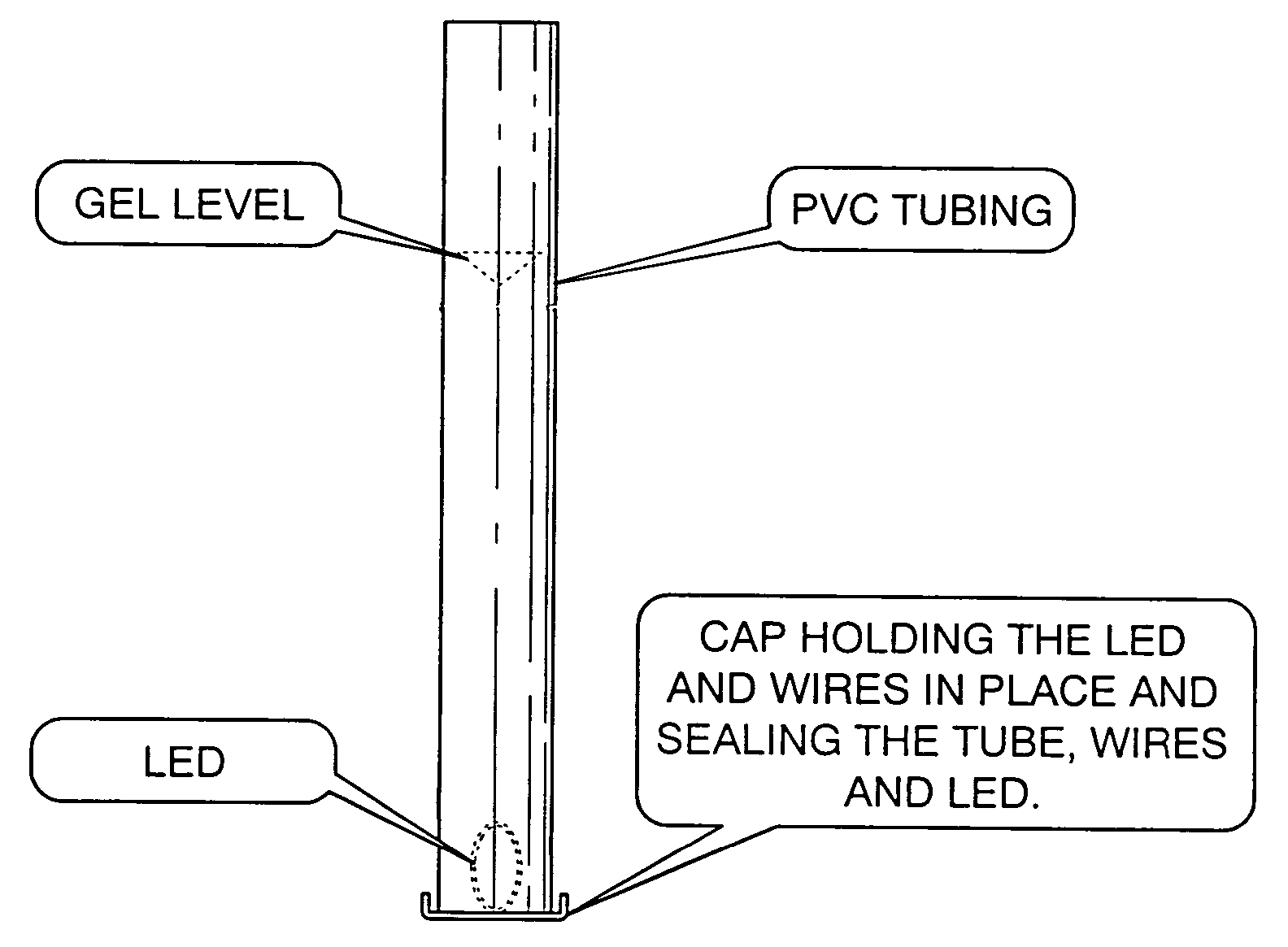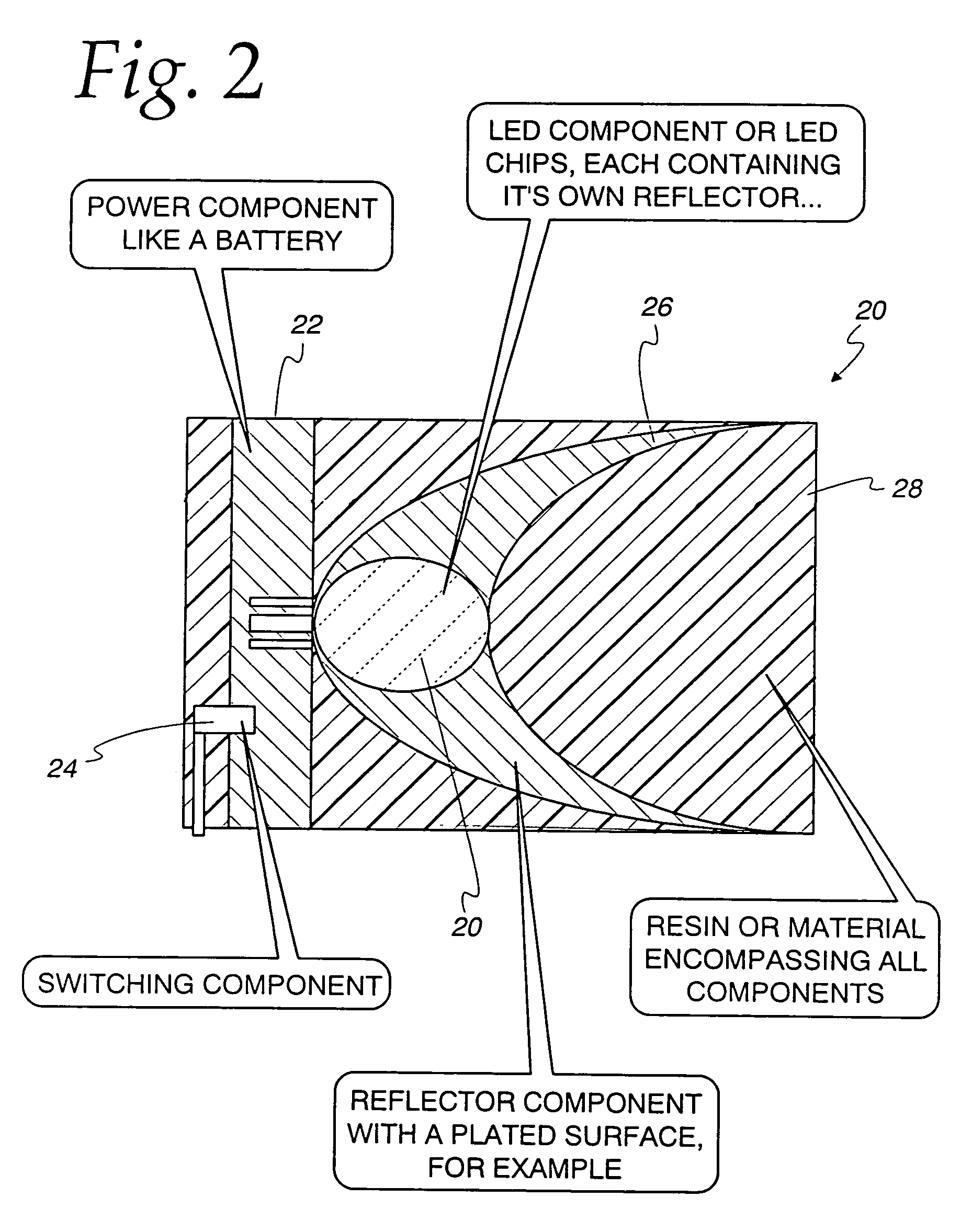Light emitting medium and illumination system
a technology of light emitting medium and illumination system, which is applied in the direction of color-music instruments, cleaning using liquids, instruments, etc., can solve the problems of high capital expenditure, cumbersome apparatus and methods used to manufacture these light guides, and high cost of raw materials and/or processes
- Summary
- Abstract
- Description
- Claims
- Application Information
AI Technical Summary
Benefits of technology
Problems solved by technology
Method used
Image
Examples
example 1
[0042]a 50 cm long, 6 mm inside diameter, regular, clear PVC (polyvinyl chloride) was filled with a water-soluble gel made mostly from de-ionized water, and Keratin / Collagen protein and other ingredients listed by LaBella Professional Formula Styling Gel—Distributed by Newhall Laboratories, Inc., Santa Clarita, Calif. 91350. An Agilent LED (HLMT-PG00) was inserted at one end of the tube, immersed in the gel and lit. The LED was installed within a cap that after installation completely sealed the tube and located the LED within the gel, FIG. 1. The aqueous illuminating light emitting device glowed very similar to prior art material—like an optic from Poly-Optics Australia Party. Ltd., Queensland, Australia lit by an LED placed at the core face. By this method, a substantial part of the light emitted from the LED was captured within the light emitting device by the principle of total internal reflection. Further, the material of the core, essentially water, advantageously provided a l...
example 2
[0043]a 50 cm long, 6 mm inside diameter THV, (fluorinated ethylene propylene) and (perfluoroalkoxy) terpolymer, or better known as tetrafluoroethylene hexafluoropropylene vinylidene tube was filled with a water-soluble polymergel mostly made from de-ionized water, and Keratin / Collagen protein and other ingredients listed by listed by LaBella Professional Formula Styling Gel—Distributed by Newhall Laboratories, Inc., Santa Clarita, Calif. 91350. An Agilent LED (HLMT-PG00) was inserted at one end of the tube, immersed in the gel and lit. The LED was installed within a cap that after installation completely sealed the tube and located the LED within the gel, FIG. 1. The aqueous illuminating light emitting device glowed very similar to prior art material—like an optic from Poly-Optics Australia Party. Ltd., Queensland, Australia lit by an LED placed at the core face.
example 3
[0044]Example 2 was repeated with adding an equal amount of a mixture of salt and water—10% by weight sodium chloride in distilled water. The salt was added to increase the refractive index, depress the freezing point and decrease the viscosity. An Agilent LED (HLMT-PG00) was inserted at one end of the tube and lit. The linear light emitting device glowed from the sides and transmitted part of the light to the solution-air interface, apparently exhibiting more transmission and less light scattering compared to Example 2 above.
PUM
 Login to View More
Login to View More Abstract
Description
Claims
Application Information
 Login to View More
Login to View More - R&D
- Intellectual Property
- Life Sciences
- Materials
- Tech Scout
- Unparalleled Data Quality
- Higher Quality Content
- 60% Fewer Hallucinations
Browse by: Latest US Patents, China's latest patents, Technical Efficacy Thesaurus, Application Domain, Technology Topic, Popular Technical Reports.
© 2025 PatSnap. All rights reserved.Legal|Privacy policy|Modern Slavery Act Transparency Statement|Sitemap|About US| Contact US: help@patsnap.com



